
Robert Capa was a Hungarian–American war photographer and photojournalist. He is considered by some to be the greatest combat and adventure photographer in history.

Photojournalism is journalism that uses images to tell a news story. It usually only refers to still images, but can also refer to video used in broadcast journalism. Photojournalism is distinguished from other close branches of photography by having a rigid ethical framework which demands an honest and impartial approach that tells a story in strictly journalistic terms. Photojournalists contribute to the news media, and help communities connect with one other. They must be well-informed and knowledgeable, and are able to deliver news in a creative manner that is both informative and entertaining.
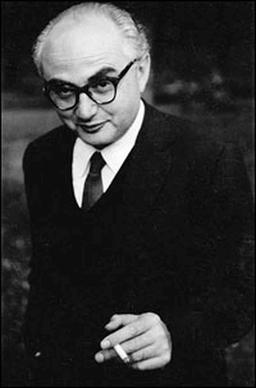
David Seymour, or Chim, was a Polish photographer and photojournalist.
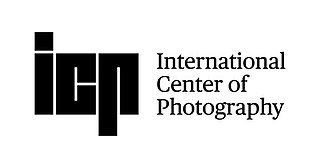
The International Center of Photography (ICP), at 79 Essex Street on the Lower East Side of Manhattan, New York City, consists of a museum for photography and visual culture and a school offering an array of educational courses and programming. ICP's photographic collection, reading room, and archives are at Mana Contemporary in Jersey City, New Jersey. The organization was founded by Cornell Capa in 1974.

The Sierra Morena is one of the main systems of mountain ranges in Spain. It stretches for 450 kilometres from east to west across the south of the Iberian Peninsula, forming the southern border of the Meseta Central plateau and providing the watershed between the valleys of the Guadiana to the north and the west, and the Guadalquivir to the south.

War photography involves photographing armed conflict and its effects on people and places. Photographers who participate in this genre may find themselves placed in harm's way, and are sometimes killed trying to get their pictures out of the war arena.
Events from the year 1936 in art.

Gerta Pohorylle, known professionally as Gerda Taro, was a German war photographer active during the Spanish Civil War. She is regarded as the first woman photojournalist to have died while covering the frontline in a war.

Cornell Capa was a Hungarian–American photographer, member of Magnum Photos, photo curator, and the younger brother of photo-journalist and war photographer Robert Capa. Graduating from Imre Madách Gymnasium in Budapest, he initially intended to study medicine, but instead joined his brother in Paris to pursue photography. Cornell was an ambitious photo enthusiast who founded the International Center of Photography in New York in 1974 with help from Micha Bar-Am after a stint of working for both Life magazine and Magnum Photos.
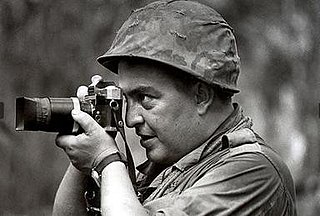
Horst Faas was a German photo-journalist and two-time Pulitzer Prize winner. He is best known for his images of the Vietnam War.

Federico Borrell García was a Spanish Republican and anarchist militiaman during the Spanish Civil War, commonly thought to be the subject in the famous Robert Capa photo The Falling Soldier.
La Sombra del Iceberg is a 2007 documentary film, that claims the photograph The Falling Soldier by Robert Capa was staged, and that Federico Borrell García was not the individual in the picture.
John Godfrey Morris was an American picture editor, author and journalist, and an important figure in the history of photojournalism.

The Battle of Cerro Muriano took place during the Spanish Civil War in 1936. The battle is perhaps most known today for the famous photograph, The Falling Soldier, that Robert Capa took during it.

The Magnificent Eleven are a group of photos of D-Day taken by war photographer Robert Capa. Capa was with one of the earliest waves of troops landing on the American invasion beach, Omaha Beach. Capa stated that while under fire, he took 106 pictures, all but eleven of which were destroyed in a processing accident in the Life magazine photo lab in London, although the accidental loss of the remaining negatives has been disputed. The surviving photos have since been called the Magnificent Eleven. The pictures have been widely celebrated, and Steven Spielberg is said to have been inspired by them when filming Saving Private Ryan.
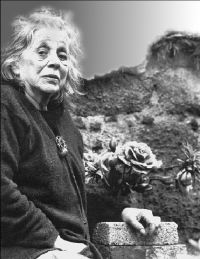
Kati Horna, born Katalin Deutsch, was a Hungarian-born Mexican photojournalist, surrealist photographer and teacher. She was born in Budapest, at the time part of the Austrian-Hungarian Empire, lived in France, Germany, Spain, and later was naturalized Mexican. Most of her work was considered lost during the Spanish Civil War. She was one of the influential women photographers of her time. Through her photographs she was able to change the way that people viewed war. One way that Horna was able to do this was through the utilization of a strategy called "gendered witnessing". Gendered witnessing consisted of putting a feminist view on the notion that war was a predominantly masculine thing.

The Picture of the Last Man to Die is a black and white photograph taken by Robert Capa during the battle for Leipzig, depicting an American soldier, Raymond J. Bowman, aged 21 years old, after being killed by a German sniper, on 18 April 1945, shortly before the end of World War II in Europe. Germany would surrender two weeks later following the Battle of Berlin.

Death in the Making is a photographic book by Gerda Taro and Robert Capa that documents the Spanish Civil War. It was published by Covici-Friede while the conflict was still underway in 1938. It is dedicated to Taro, who died in the battlefield the year prior. The book also includes photographs by David Seymour and André Kertész. Though the photographs are credited to Robert Capa, Capa has written that the work was a collective project by both photographers and that the photographs “are interspersed and unattributed.” Taro is also thought to have been excluded from authorship for fear that publishers would take a female photographer less seriously. This book helped to cement Capa's and Taro's reputations as leading war photographers and pioneers in photojournalism.
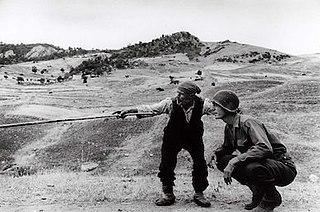
Sicilian Peasant Telling an American Officer Which Way the Germans Had Gone. Near Troina. Italy. August 1943 is a black and white photograph taken by Robert Capa in Sicily on 4 August 1943. Capa had come to Sicily in late July 1943 to document the Allies invasion of the Italian island and took many photographs related to the conflict, presenting the American soldiers, the German invaders, the Italian partisans and the civilian population.


















